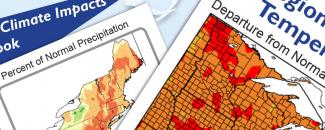
The contiguous United States just experienced its 15th warmest summer on record, with above-average temperatures spanning the western third of the country and cooler-than-average temperatures prevailing in the Midwest and South. Seventeen of the past twenty summers, including the last seven, have been warmer than average. And, according to the Climate Prediction Center’s October–December temperature outlook, nearly all of the United States is favored to have a warmer than average autumn as well.
Summer also brought above normal precipitation to much of the contiguous United States, with Alabama, Florida, Louisiana, and Texas having much above average precipitation and Mississippi being record wet for the season. Conversely, the Northwest, Northern Plains, parts of the Midwest, and parts of New England experienced a drier-than-normal summer.
The Climate Prediction Center’s October–December precipitation outlook favors above-normal precipitation for western Alaska as well as for the Pacific Northwest and Northern Rockies. Below-normal precipitation is favored across the middle and lower Mississippi Valley and across much of the Southeast.
Impacts and Outlooks for Your Region
Get more details for your region in the September 2017 climate impacts and outlooks summaries:
- Alaska and Northwestern Canada Region
- Great Lakes Region
- Gulf of Maine Region
- Midwest Region
- Missouri River Basin
- Northeast Region
- Pacific Region
- Southeast Region
- Southern Region
- Western Region
Creating These Quarterly Summaries
NOAA’s Regional Climate Services Program lead the production of these quarterly summaries of climate impacts and outlooks for various regions of the United States as well as parts of Canada along the border. This effort, which began in 2012, now includes as many as 10 unique regional products, all produced collaboratively with partner organizations.
Partnering with Canada
Since September 2016, NOAA’s Regional Climate Services Director for Alaska has been working with our Canadian collaborators from the Environment and Climate Change Canada Northwest Provinces to create a seamless joint summary for this region. Similarly, NOAA’s Regional Climate Services Director for the Eastern Region and for the Central Region have also worked with Environment and Climate Change Canada to create seamless assessments for the Gulf of Maine and Great Lakes regions. Our partnership with Canada helps us provide the tailored information these communities need to better understand their unique regional climates.
You can access all of the Climate Impacts and Outlooks summaries as well as additional reports and assessments through the U.S. Drought Portal Reports web page at Drought.gov.



